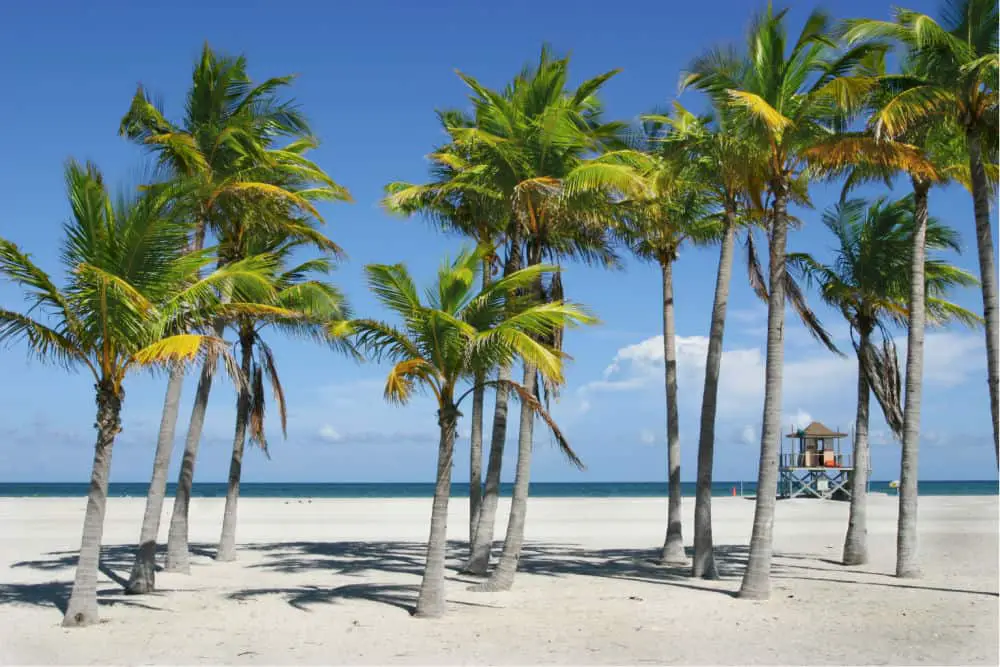A tiny house — one that is 400 square feet (37 m²) or smaller — can offer an affordable alternative to home buyers in a real estate market as expensive as Miami.
You can have a tiny house in Miami. This includes the three variants of tiny homes — built on-site, modular and prefabricated units, and tiny homes on wheels. However, each must meet specific criteria to be in compliance with Miami building codes and zoning regulations.
This article will examine how welcoming Miami-Dade regulations are to tiny homes. If you are interested in owning and living in a tiny house in Miami, read on, and learn about the involved process.
What Determines Whether You Can Have a Tiny Home in Miami?
When it comes to understanding whether you can have a tiny home in Miami, Florida, it is first necessary to understand that a tiny house is governed by the same rules and regulations that govern all forms of housing. In the state of Florida, this is governed by Florida statutes.
These statutes dictate that each county and city in Florida can create and enforce their particular laws regarding zoning for different types of housing and their corresponding building codes — tiny homes included.
In the Miami area, the 34 independent municipalities — and the unincorporated sections of Dade county — fall under a two-tier system of local governance. This is known as Miami-Dade County. All of these areas have their housing and zoning regulations enforced by the Miami-Dade government.
What Type of Tiny Homes Are Allowed in Miami?
Miami-Dade County does allow for the building and habitation of tiny homes. These by in large conform to the International Residential Code sections that are specific to tiny homes. However, there are certain caveats regarding each of the three variants of tiny homes.
Tiny Homes Built On-Site
A tiny home built on-site refers to one constructed on the property where it is to stand. It must be fixed and cannot be mobile.
The tiny home must adhere to the same building code and minimum housing standards applied to other detached homes in Miami-Dade County. This requires your Miami tiny home to have suitable connections for sewer, water, gas, and electrical service.
Miami-Dade County has many areas designated as “special hazard areas” due to the risk of flooding and hurricane damage. If you plan on building your on-site tiny home in one of these areas of Miami, it must conform to those added regulations.
Chief among these are those that apply to a minimum elevation of the land lot and anchoring regulations in section 11 C-4 of the Miami-Dade Code of Ordinances. In essence, these prohibit your tiny home’s footing and foundation to rest on non-compacted fill. They further stipulate that it must be securely anchored to its foundation or pilings.
As with larger homes, your on-site tiny home construction must be inspected by local building officials and certified as compliant for it to be habitable.
Modular and Prefabricated Tiny Homes
Miami-Dade ordinances allow for the improvement of modular and prefabricated tiny homes. These are tiny homes that are pre-built off-site and are assembled on your property.
Examples of this tiny home include the 292 square foot (27.1 m²) Lillevilla Getaway that comes with everything but the roofing shingles. Another example is the Allwood Avalon Cabin. This is on the larger end for a tiny home at 542 square feet (50.4 m²). It does, however, include a porch in its floor plan. The interior is also divided into a living room, bedroom, bathroom, kitchen, and general-purpose area.
Miami has also seen an uptick in tiny homes made from former shipping containers. Local building companies convert these shipping containers into tiny homes and assemble them on your selected site. However, the prefabricated tiny homes must adhere to the same codes and regulations as those stipulated for the tiny homes built on-site.
Tiny Homes on Wheels
The one type of tiny home that you would not be able to use as a primary dwelling on a private lot in Miami is the tiny home on wheels (THOW). These are classified as mobile homes by Miami-Dade ordinances. The law, however, does allow these wheeled tiny homes to reside within approved mobile home parks.
If you were to place a tiny home on wheels in a mobile home park in Miami, you must abide by all sections of Chapter 19A of the Miami-Dade ordinances. These — similar to those for non-wheeled tiny homes in designated hazardous areas — deal primarily with anchoring the THOW to an approved foundation.
Placing a THOW on land, even with the property owner’s permission and abiding by Chapter 19A, is not allowed in Miami-Dade for permanent housing. Such placements are only permissible if you plan to use the wheeled tiny house as a temporary dwelling while another fixed structure is being constructed.
How to Avoid Compliance Issues With a Tiny Home in Miami
Although tiny homes are permissible in Miami as primary dwellings, the myriad of ordinances and regulations can be complicated for some to navigate. For this reason, consulting with a land use and zoning attorney before purchasing land on which you intend to build a tiny home is advisable.
Land use attorneys specialize in advising their clients on how zoning ordinances and building codes in Miami-Dade County will affect their intended plans for a tiny home.
Additionally, to remain compliant and avoid fines or costly rebuilds, hiring a contractor specializing in tiny home construction or assembly in the Miami-Dade area is also advisable. While nothing precludes you from building your own tiny home in Miami, the margin for error is narrow, and mistakes can be costly.
Is Having a Tiny House in Miami Worth It?
Whether owning a tiny house in Miami is worth it is a subjective question. For some, the minimalist appeal of a tiny home merits the effort. For others, the lower construction and upkeep costs in a housing market such as Miami makes it financially worthwhile.
Yet others would find the hassle of finding a lot that is small enough for a tiny home, and that is zoned accordingly uninviting. After all, there are other regions of the country where edifying a tiny home involves a lesser bureaucratic process. That has the added convenience of lower prices for lots of land.
Additionally, if you were considering building and owning a tiny home in Miami and then renting it out, you must then adhere to an additional set of laws and regulations that govern your responsibilities and liabilities as a renter.
Consideration should also be given to the reasoning behind some of the strictest ordinances that are in place for tiny homes in Miami — the weather. While Miami is stereotypically heralded for its sunny and warm climate, it is also notorious for hurricanes, tropical storms, and the flooding accompanying these meteorological events.
This is why you should also factor in the homeowner’s insurance premiums that they imply and the potential for out-of-pocket expenses that you would incur if your tiny home were to sustain weather-related damage.
Conclusion
While it is permissible to own, build, and live in a tiny home in Miami, it is important to bear in mind that they are treated just as any larger-sized home when it comes to building codes and zoning.
While this type of adherence to regulations may contradict the purest essence of the “tiny home lifestyle,” failure to do so could result in your tiny home being subject to condemnation by the local government.

